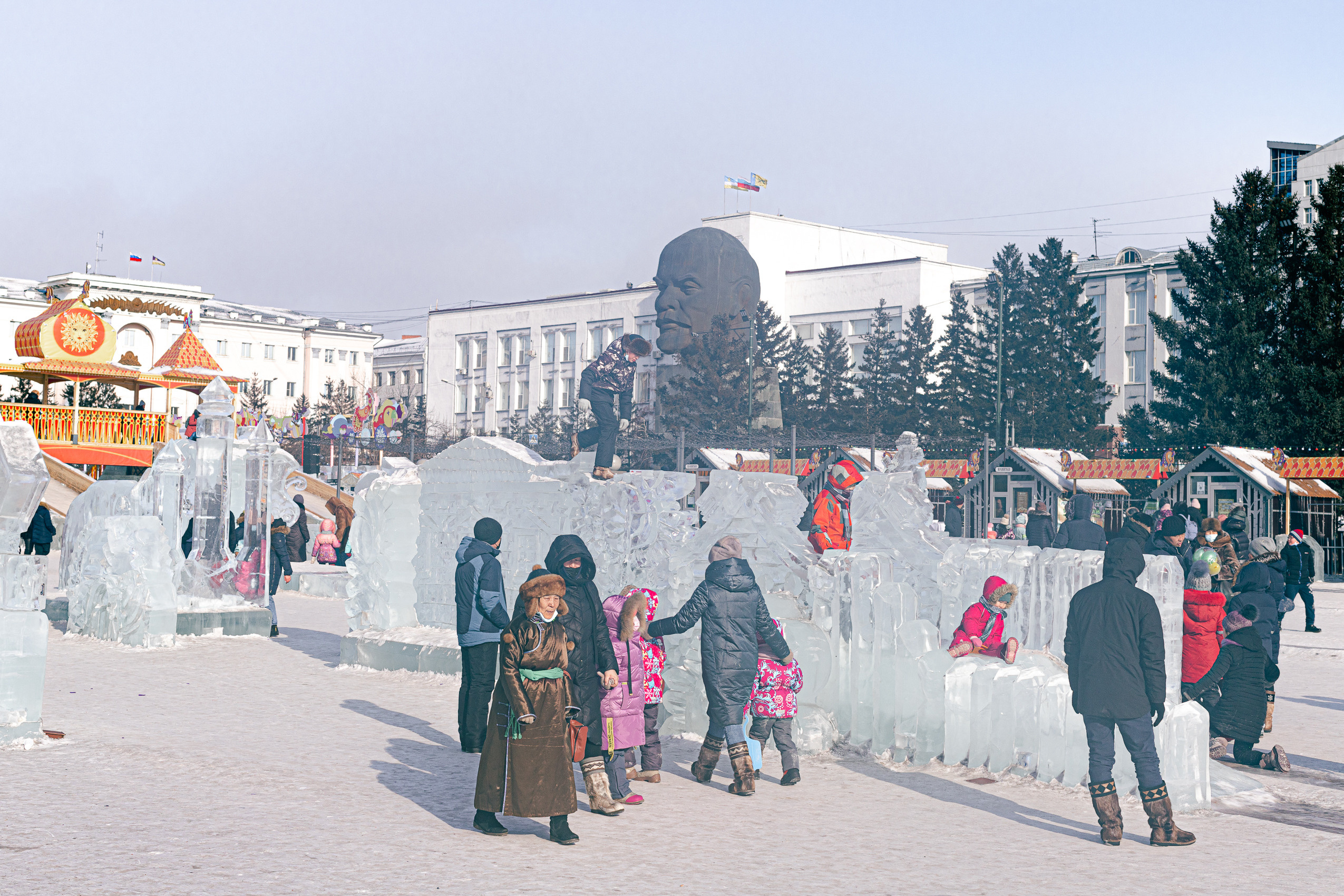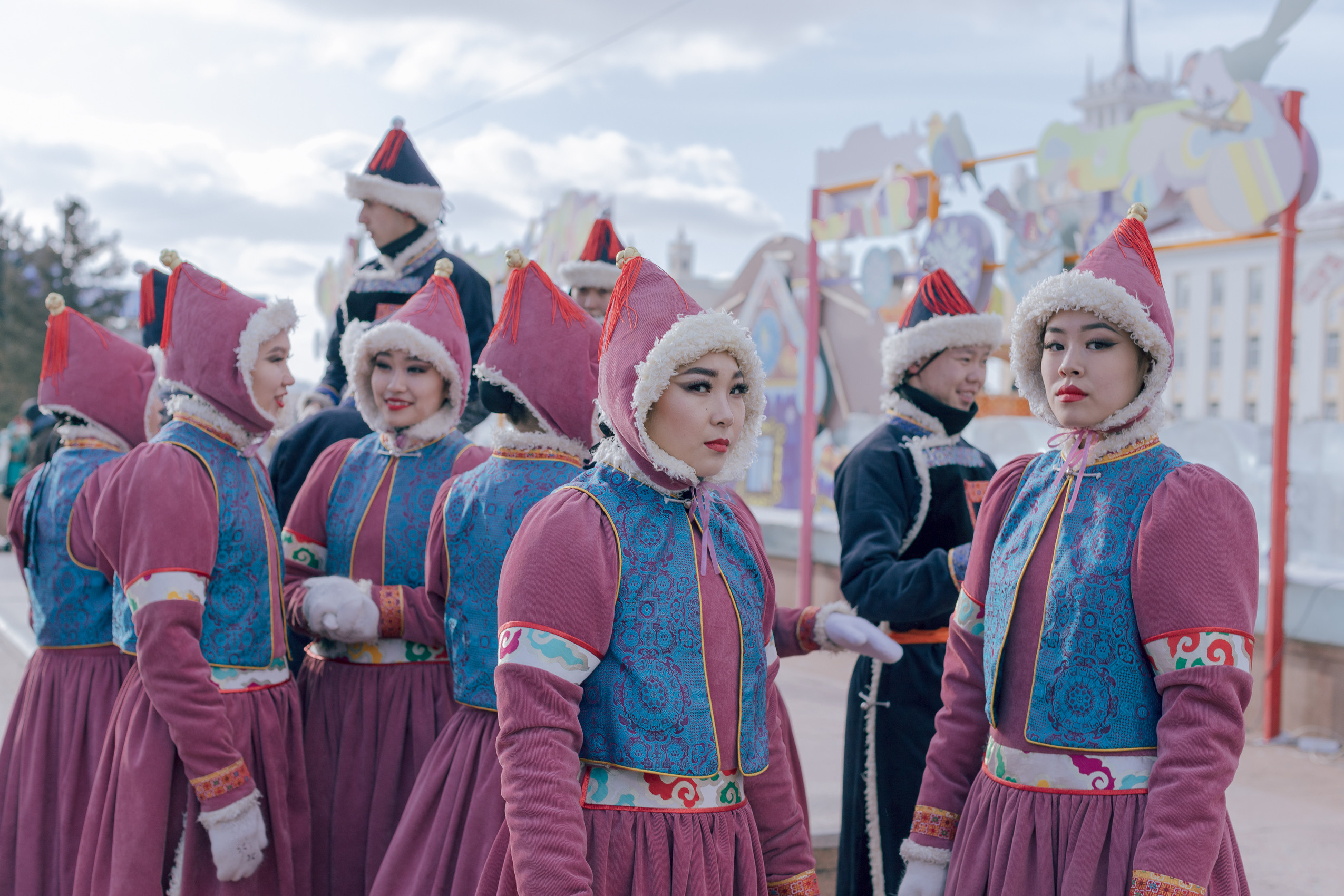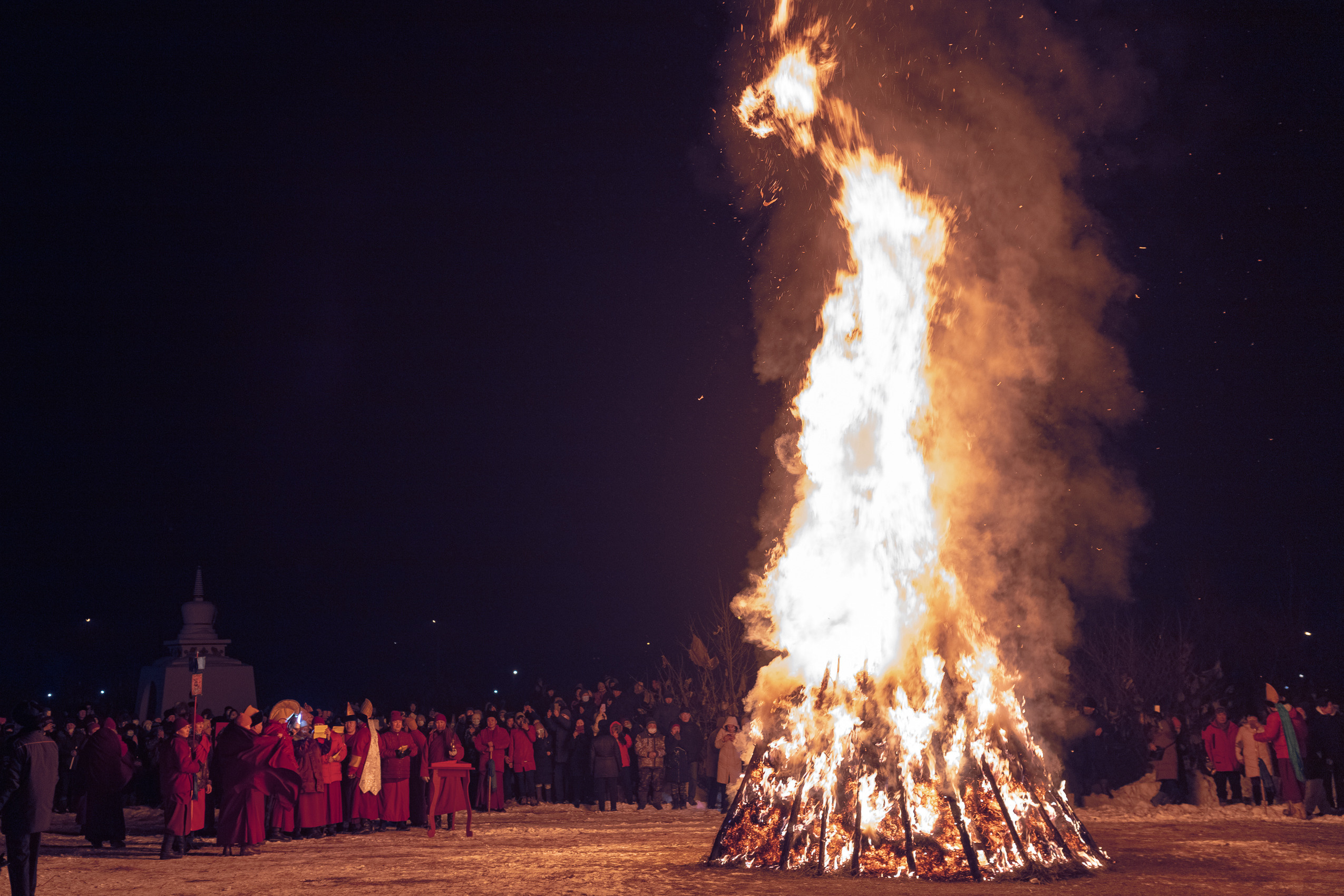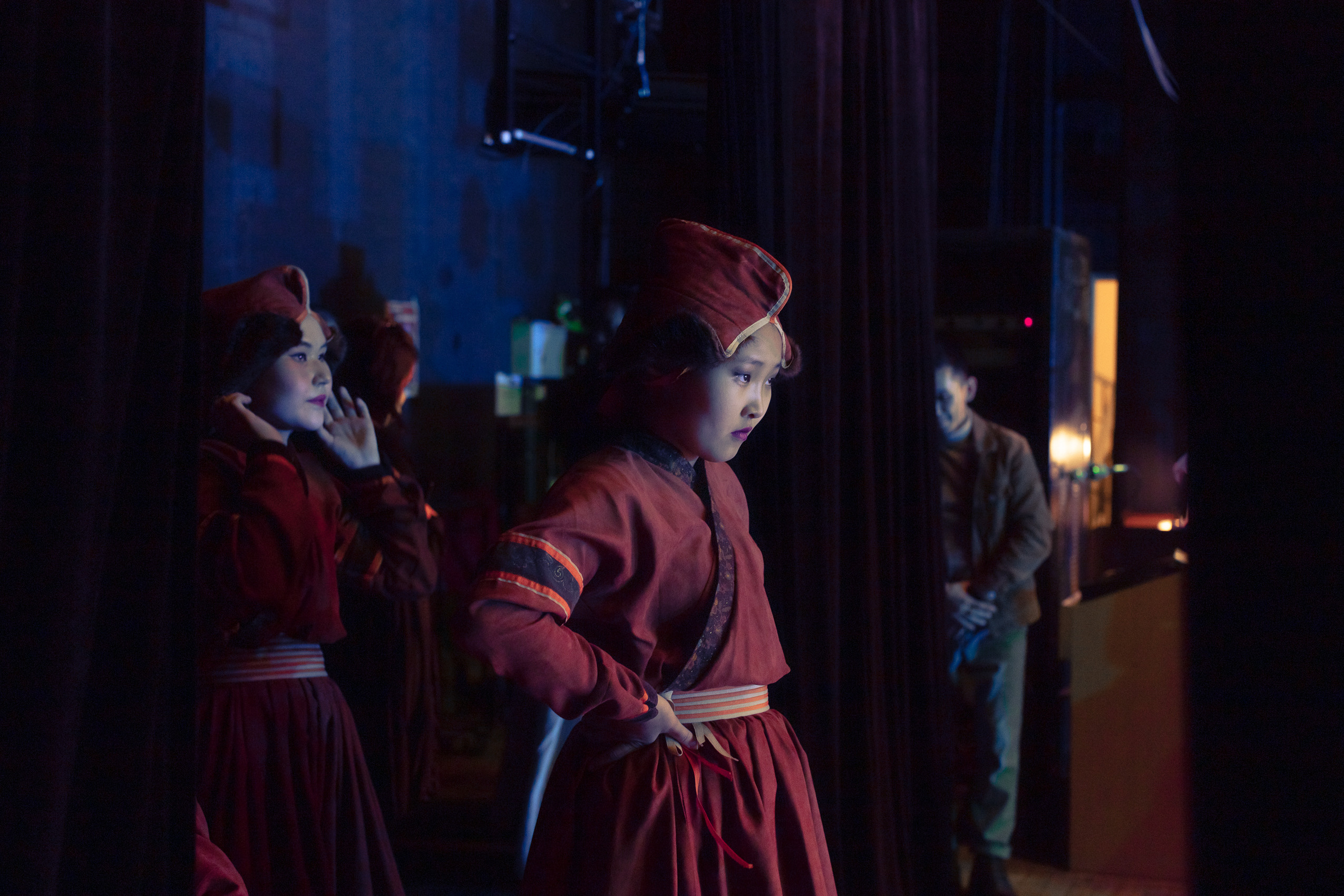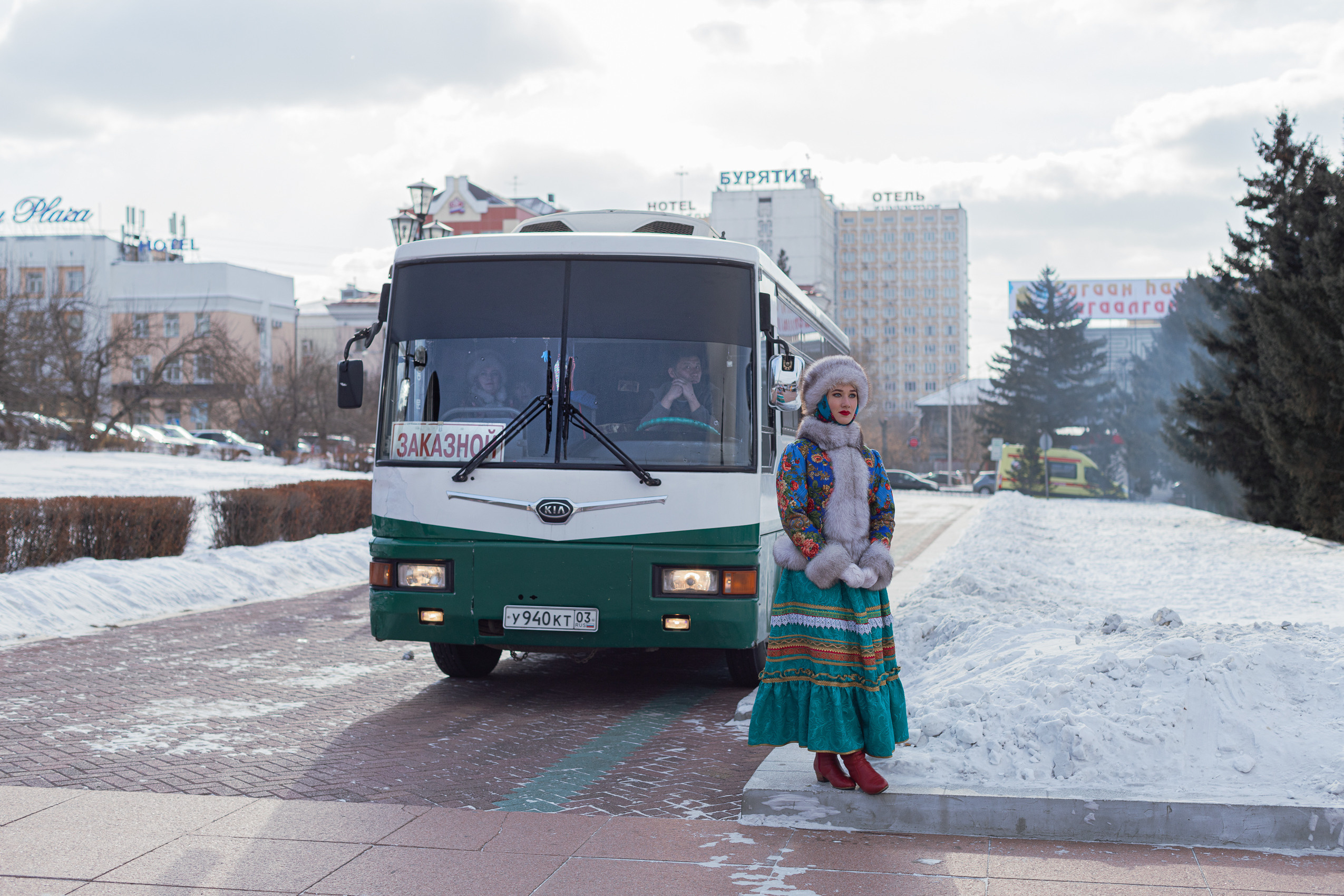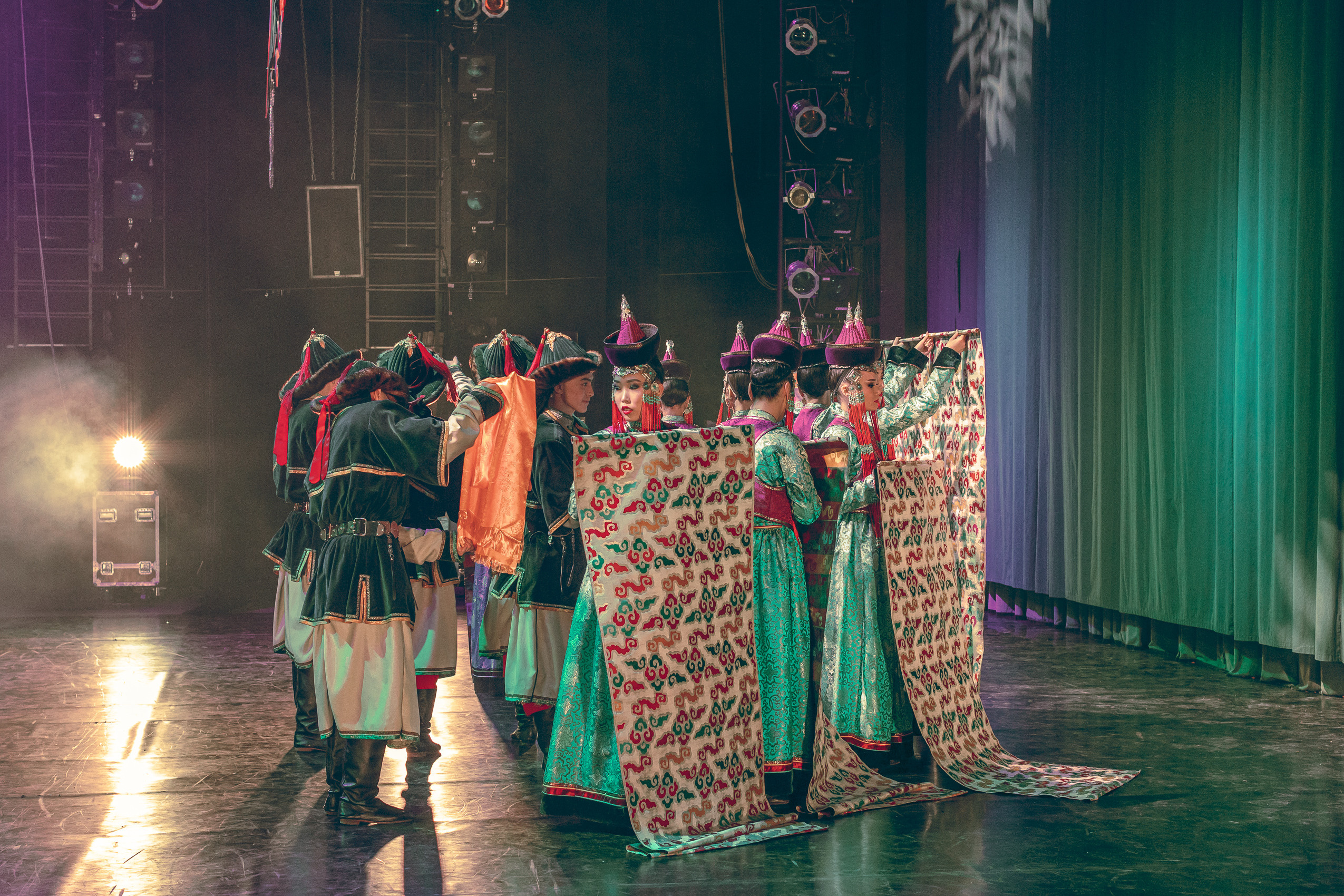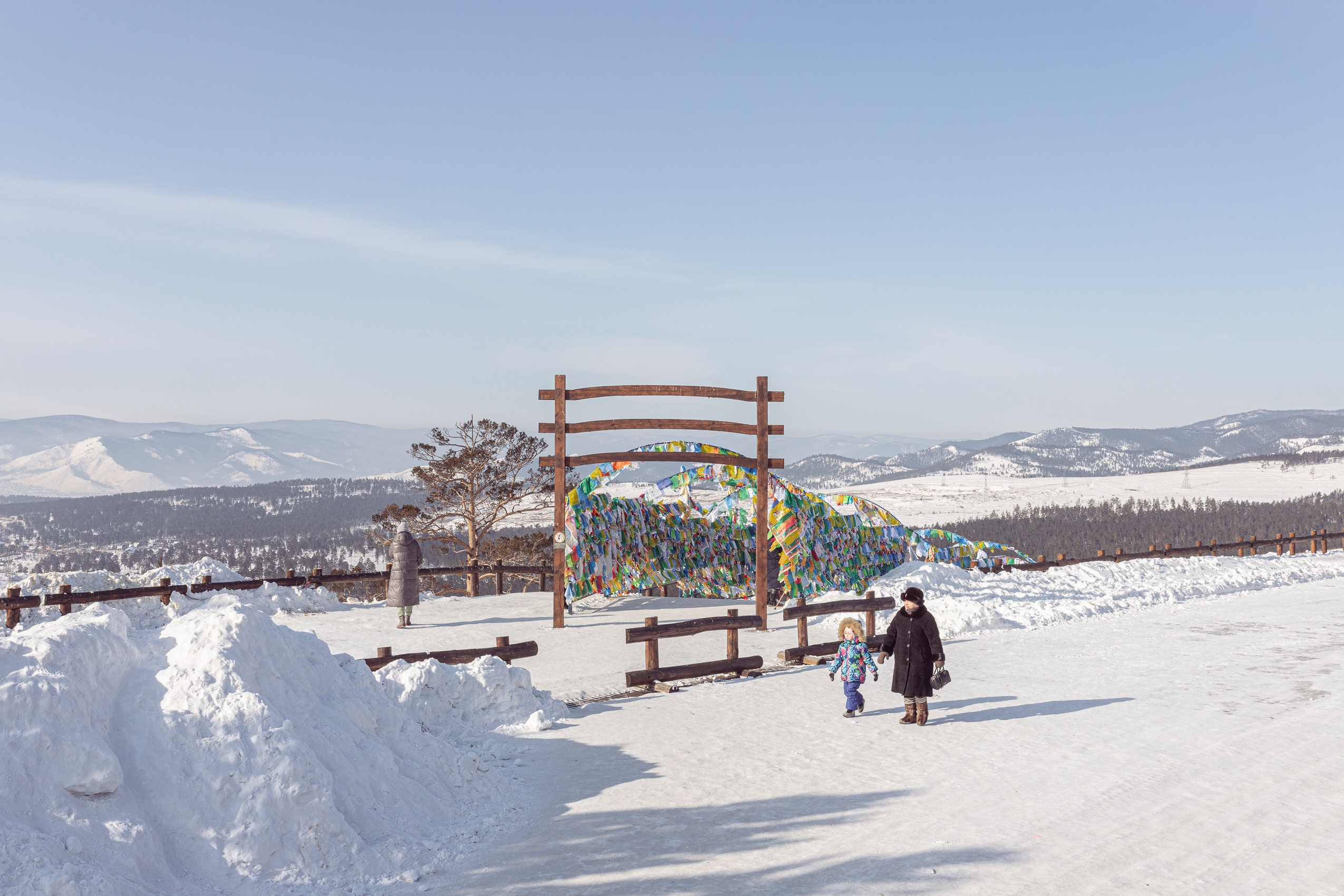Sagaalgan / 2021
In several regions of Russia the New Year is celebrated twice. The national republics of Buryatia, Tuva, Kalmykia and Altai, where Buddhism is traditionally practiced also celebrate the New Year according to the lunar calendar. Depending on the year it is celebrated between the end of January and the end of February. In Buryatia this holiday is called Sagaalgan or the holiday of the White Month. It symbolises the beginning of spring, the renewal of man and nature. In Soviet times Sagaalgan was banned in Buryatia for a long time. The status of a public holiday was only reestablished in 1990.
According to the tradition the New Year is preceded by rituals and preparations. The Dugzhuuba ritual is performed at temples two days before the main holiday. At home the believers wipe off their bodies with a piece of dough or a napkin. It’s believed that by doing that, you remove all the bad energy away. By burning these pieces in the fire of Dugzhuuba, people ‘clean’ themselves and get ready to roll into a new year. Afterwards, monks hold a prayer and light a ritual fire where an effigy of an evil deity is burnt. The last day of the old year is called “a closed day” or “a day of silence”. On this day it is common to stay at home, preparing for the New Year and decorate the home altar and prepare new clothes. The symbol of the White Month holiday is white meals: milk, cottage cheese and sour cream which should definitely be on the table. On New Year’s Eve, one must stay up all night reading prayers at home or attending a prayer in the church.
The holiday lasts for a whole month. It is usual to visit relatives and friends, to exchange greetings and gifts, to have a feast. The richer the New Year’s Eve treats and the more guests come, the richer and more fortunate the coming year will be. The next day after the New Year’s Eve people hang colourful flags with prayers in holy places on trees. They write their personal names and the names of their family members and close relatives on them. The ritual flags are used to bring good luck and prosperity as they are waving all year round.

